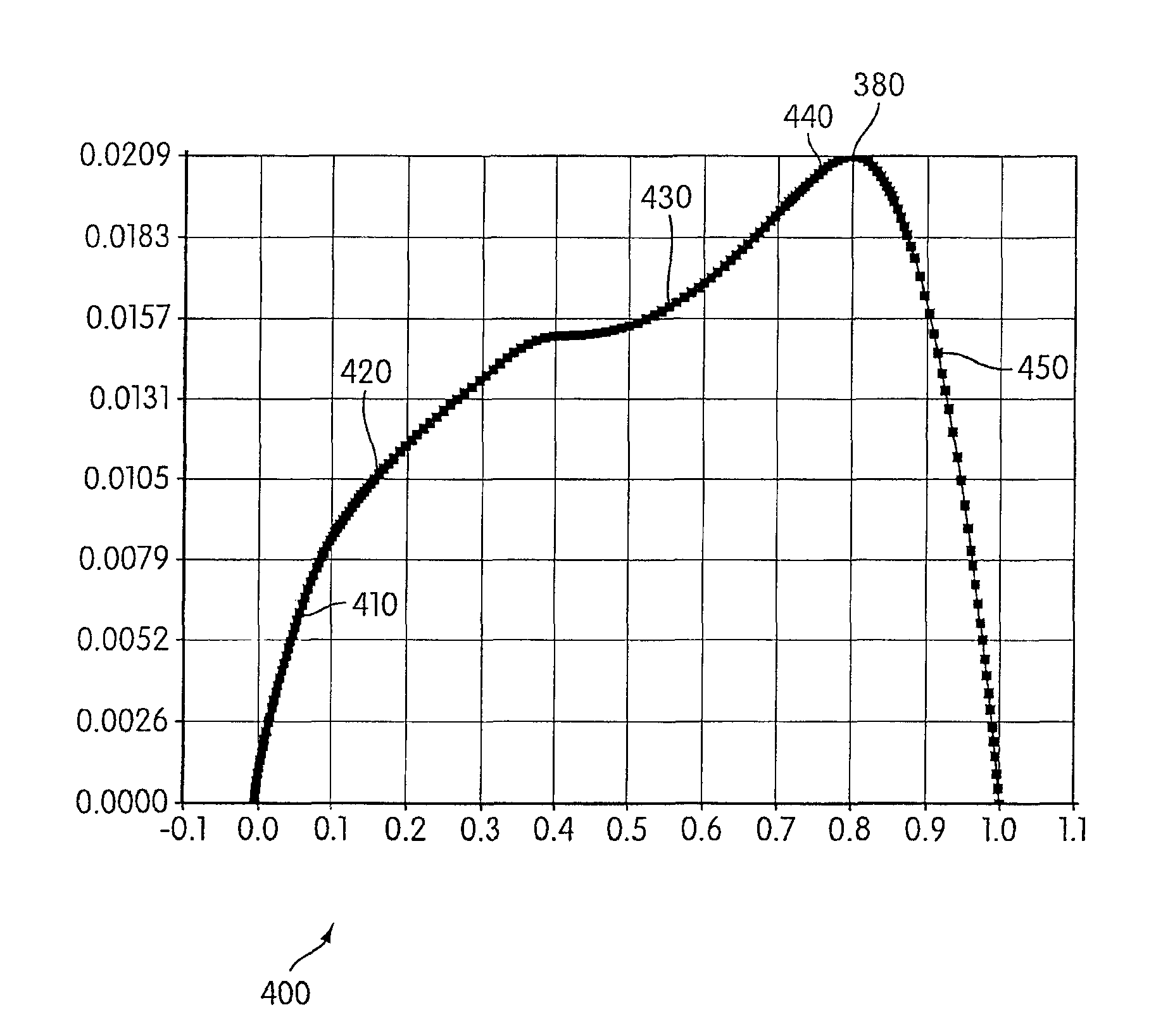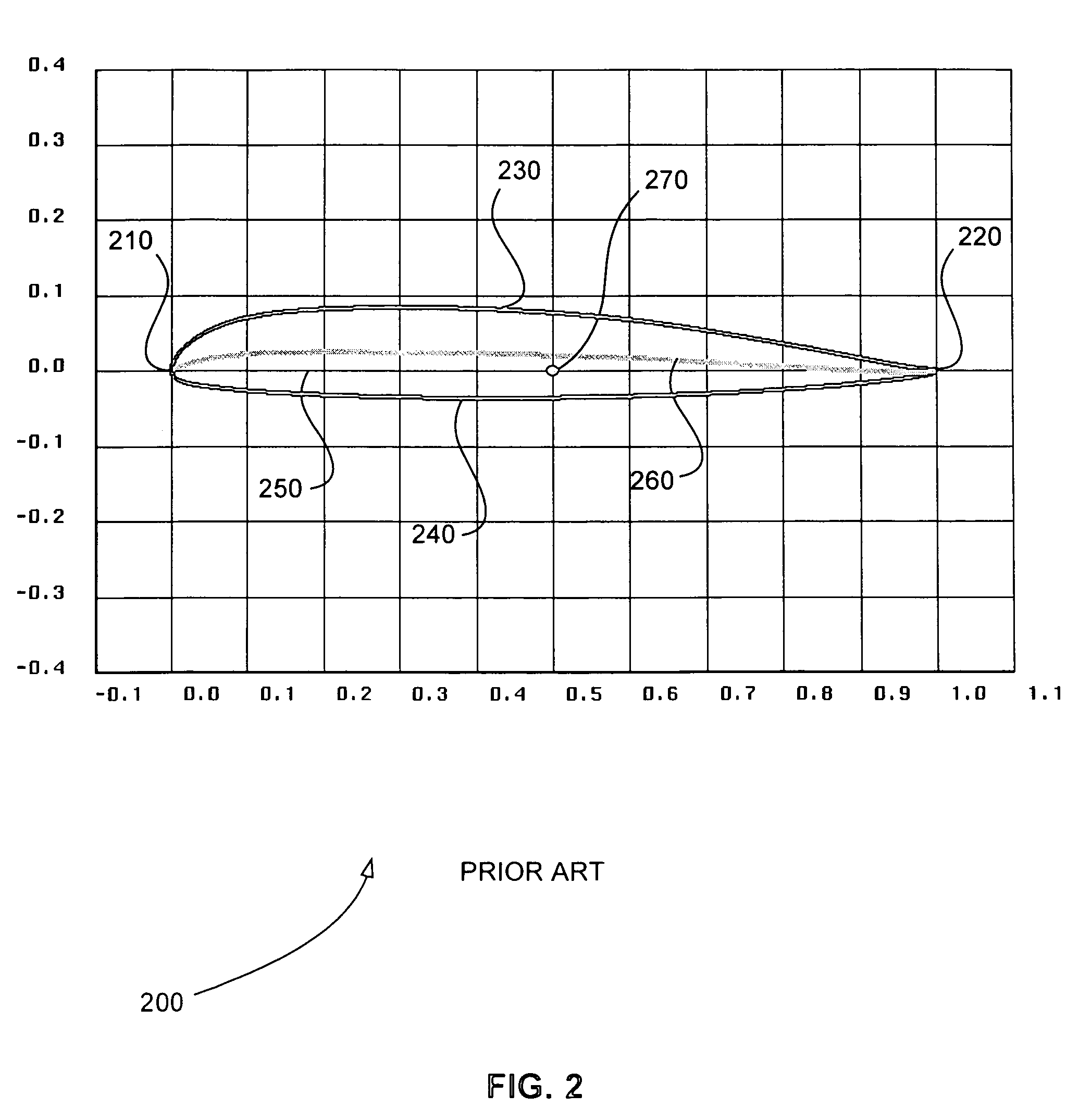High performance low noise rotorcraft blade aerodynamic design
a rotorcraft and low noise technology, applied in the field of helicopter systems, can solve the problems of blade stalling, no longer providing increasing lift, and too large angle of attack, and achieve the effect of less drag, higher lift, and higher li
- Summary
- Abstract
- Description
- Claims
- Application Information
AI Technical Summary
Benefits of technology
Problems solved by technology
Method used
Image
Examples
Embodiment Construction
[0053]FIG. 1 is a schematic diagram of an exemplary cross-section 100 of a main rotor blade of a helicopter where there is no difference between chord line 150 and camber line 160. The vertical axis represents a thickness and the horizontal axis represents a depth of cross-section 100. Cross-section 100 includes leading edge 110, trailing edge 120, upper surface 130, lower surface 140, chord line 150, and camber line 160. Chord line 150 is defined as the middle of trailing edge 120 to farthest point on leading edge 110. The middle of a trailing edge is used because blades do not usually end in a single point. A trailing edge that has a rounded or blunt trailing edge is easier to manufacture and maintain.
[0054]Camber line 160 is defined as the collection of midpoints of lines drawn from upper surface 130 to lower surface 140 and perpendicular to chord line 150. Since upper surface 130 and lower surface 140 are mirror images, chord line 150 and camber 160 are the same line for cross-s...
PUM
| Property | Measurement | Unit |
|---|---|---|
| Mach numbers | aaaaa | aaaaa |
| time | aaaaa | aaaaa |
| air speed | aaaaa | aaaaa |
Abstract
Description
Claims
Application Information
 Login to View More
Login to View More - R&D
- Intellectual Property
- Life Sciences
- Materials
- Tech Scout
- Unparalleled Data Quality
- Higher Quality Content
- 60% Fewer Hallucinations
Browse by: Latest US Patents, China's latest patents, Technical Efficacy Thesaurus, Application Domain, Technology Topic, Popular Technical Reports.
© 2025 PatSnap. All rights reserved.Legal|Privacy policy|Modern Slavery Act Transparency Statement|Sitemap|About US| Contact US: help@patsnap.com



